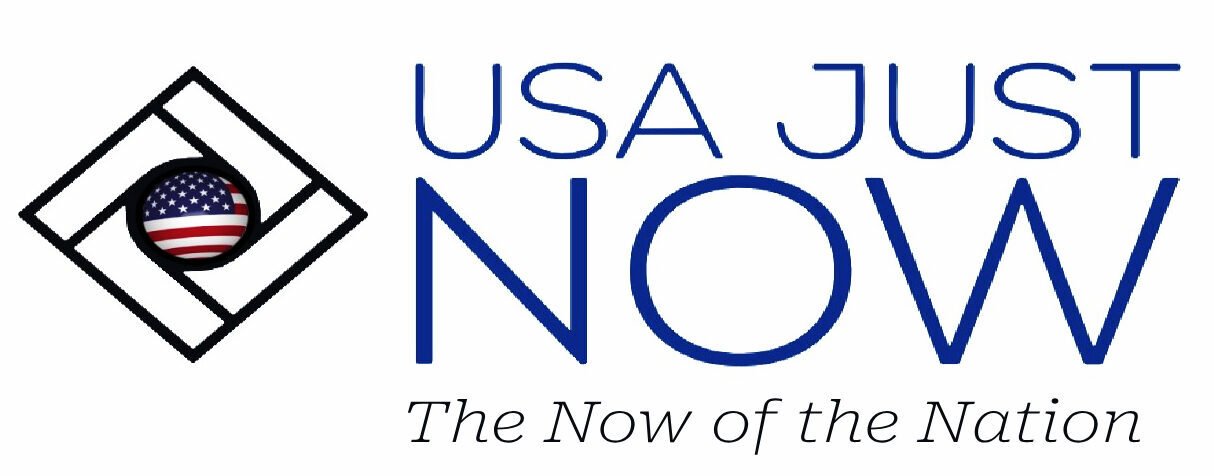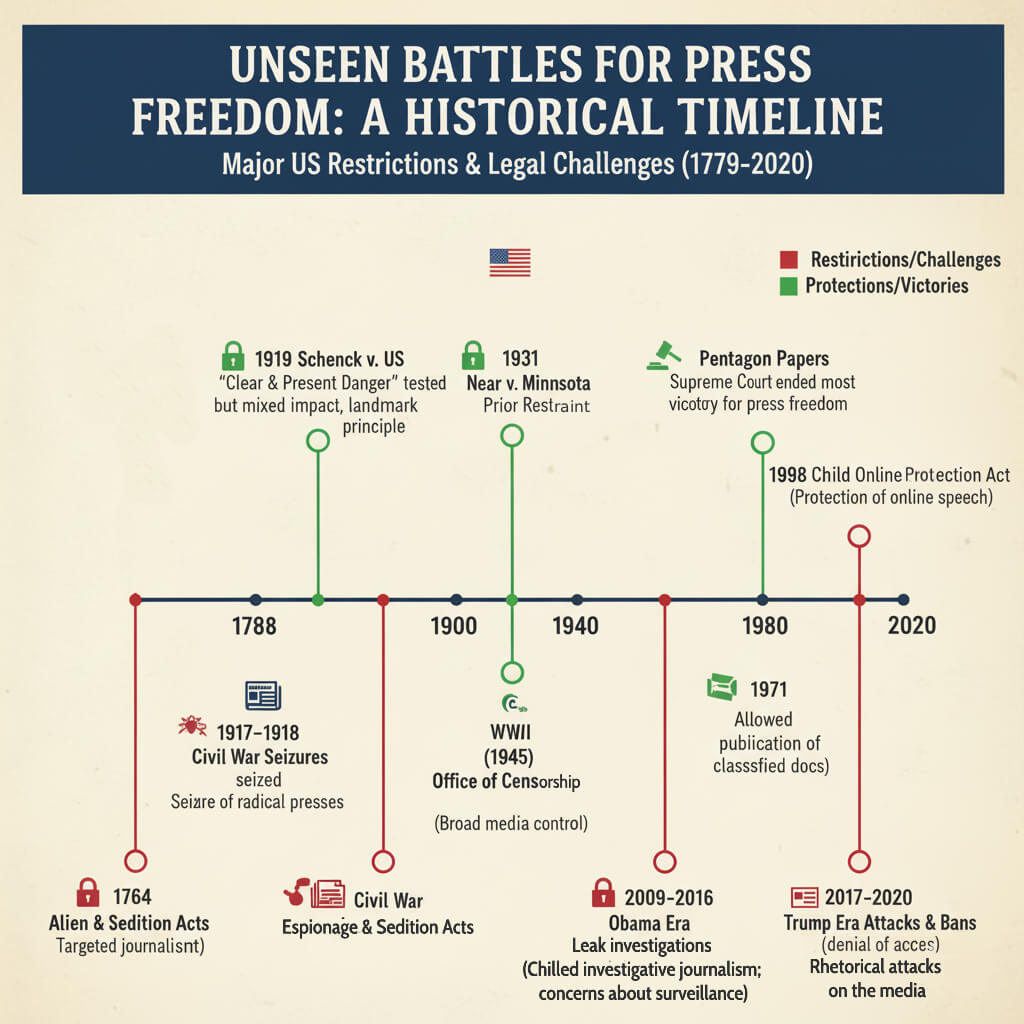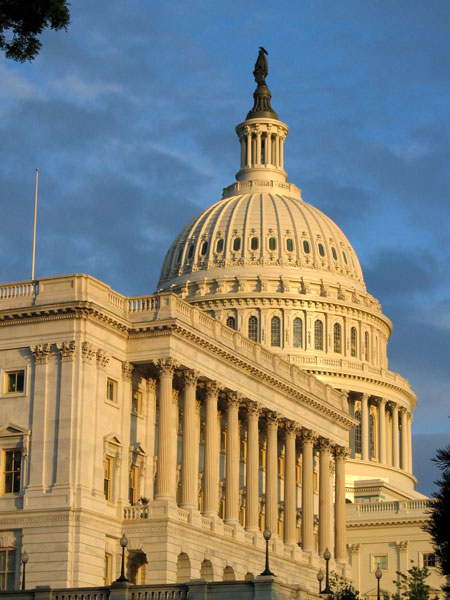New policy of Pentagon’s on media access has been felt on a personal level by many reporters and press staff. It was really the tough decision for them to walk away from a place where they’ve built careers and lasting friendships. The feeling in those halls was a mix of uncertainty and resolve, as journalists collected their memories and press badges and promised to keep asking questions, from outside if required. Their actions and emotions show how these policies touch real lives, keeping the age-old debate about access and truth alive in every conversation, handshake, and moment spent striving to inform the public. Let us understand the US Press Freedom: Unseen Battles & Historical Restrictions, which is crucial for any independent media.
Freedom of the press is considered as a cornerstone of American democracy. In US, the First Amendment clearly declares freedom of the press, the reality across U.S. history reveals a persistent tension. Till the current digital age from nascent nationhood, government actions have tested repeatedly the very liberties of journalists strive to uphold, particularly during the moments of national crisis and political turbulence and sometimes restricted them.
What Exactly Are Media Freedom Restrictions?
Media restrictions aren’t always overt censorship. They can take many forms: from direct censorship and legal penalties to denial of access, intrusive surveillance, and even targeted intimidation. These measures often appear when state interests are invoked—be it national security, public order, or political control. It’s a delicate balance, and one that has frequently tipped towards government control throughout history.
Early Stumbles: Press Freedom in the 18th and 19th Centuries
Government anxiety over dissent and the need for control surfaced early in the American experiment. In 1798, the Alien and Sedition Acts criminalized opposing the federal government and notoriously targeted anti-Federalist journalists, marking one of the first federal attempts to restrict press liberty.
Fast-forward to the tumultuous era of the Civil War. In 1864, President Lincoln himself ordered federal troops to seize the offices of The New York World and the Journal of Commerce after they printed a forged presidential proclamation. This act, while fueled by wartime necessity, spurred a national debate over just how much censorship war could justify.
Wartime Censorship: A 20th-Century Challenge to Press Freedom
Periods of global conflict have historically prompted the most sweeping restrictions on media. The 1917 Espionage Act and its 1918 Sedition Act companion famously targeted supposedly disloyal press coverage during World War I. The Supreme Court’s ruling in Schenck v. United States (1919) established that speech posing a “clear and present danger” could be punished – a test that has been hotly debated ever since.
During World War II, the Roosevelt-era Office of Censorship wielded broad powers over mail, news reports, and even photographs. Though much of this was voluntary “self-censorship” by the press for the war effort, it later prompted significant criticism and reflection on the role of an independent media during national crises.
Political Crackdowns and Landmark Supreme Court Decisions
It wasn’t just wartime that saw official suppression. In peacetime, political dissent and radicalism also met significant challenges. The 1919 Palmer Raids, for instance, resulted in radical presses being seized and staff deported, stirring widespread protest over civil liberties.
However, the Supreme Court has also served as a crucial bulwark for press freedom. Near v. Minnesota (1931) ended most “prior restraint” censorship, fortifying press freedoms by making it incredibly difficult for the government to prevent publication before it happens. Decades later, The Pentagon Papers case (1971) showcased a major victory for open government, as the court famously refused to block publication of classified war documents, reaffirming the high bar for government censorship.
Modern Press Freedom Battles and the Digital Age
As communication evolved into the digital age, so have the legal and political challenges to media freedom. Early attempts to restrict internet content, such as the Child Online Protection Act (1998), were eventually struck down in court in favor of free speech, highlighting the unique challenges of regulating online information.
More recently, crackdowns have emerged from both surveillance and denial of access. The Obama administration’s aggressive leak investigations chilled investigative journalism and raised concerns about government overreach in monitoring journalists’ sources. The Trump administration’s frequent rhetorical attacks on the media (“enemy of the people”), along with bans on critical outlets from official events, further strained government-media relations and challenged norms of transparency.
Conclusion: The Ongoing Struggle for American Liberty
While the First Amendment continues to serve as a vital bulwark for American journalists, history clearly proves that press freedom remains vulnerable—especially in times of crisis or deep political division. Each new restriction, challenge, and legal case has shaped the evolving, often contentious, relationship between the government and independent media. This critical dialogue continues to define the very essence of American liberty today, reminding us that safeguarding a free press is an ongoing responsibility for all.








